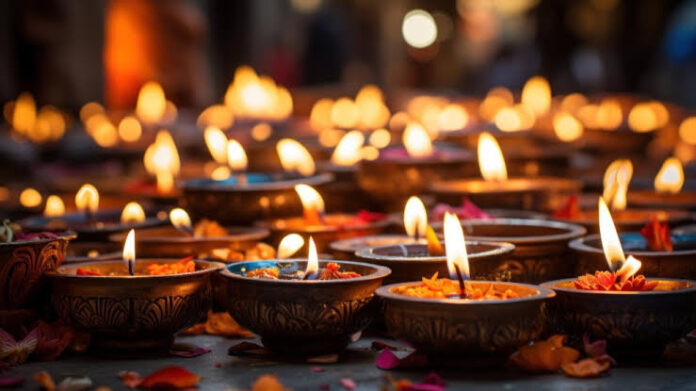Diwali is the most significant festival in India, celebrated on the Amavasya Tithi (new moon day) during the Krishna Paksha of the month of Kartik, usually falling in October or November. The festivities extend over five days, beginning with Dhanteras and concluding with Bhai Dooj. In 2024, the main Diwali celebration will take place on October 31. This festival symbolizes the victory of good over evil and light over darkness, a tradition that has endured for centuries. Various rituals are associated with Diwali, and we will explore each one. First, let’s discuss the auspicious timings for this year’s celebrations.
Diwali 2024: Date and Time
In India, festivals are determined by tithis, which are based on the moon’s movements. This aspect is vital in Vedic astrology for identifying auspicious times for events like birthdays and marriages. In 2024, Diwali will be celebrated on Thursday, October 31. The Amavasya Tithi will begin at 5:22 AM on October 31 and continue until 7:46 AM on November 1.
Lakshmi, the goddess of wealth and fortune, is worshipped during Diwali. This year, the auspicious time for Lakshmi Puja is from 7:19 PM to 9:11 PM on October 31. Now, let’s delve into the related festivities and celebrations.
Dhanteras
The first day of Diwali festivities is Dhanteras, observed on Tuesday, October 29, 2024. The term ‘Dhan’ means wealth, while ‘teras’ signifies the 13th day of Krishna Paksha. Dhanteras is deemed auspicious for purchasing gold and silver jewelry, symbolizing the welcoming of Goddess Lakshmi.
Naraka Chaturdashi or Chhoti Diwali
The second day celebrates the victory over the demon Narak, with some associating his defeat with Goddess Kali and others with Lord Krishna. This day honors the triumph of good over evil, and taking an oil bath with specific rituals is considered especially auspicious.
Also Read- Ayodhya Ram Mandir Announces Diwali Celebration Date
Diwali (Lakshmi Puja)
The third day marks the return of Lord Ram to Ayodhya after defeating the demon king Ravan. This tradition has been upheld for centuries, with people illuminating their homes with earthen lamps (diyas) and bursting firecrackers. Vibrant rangoli designs at the entrances of homes are an essential part of the celebration. In the evening, special puja is performed, praying to Goddess Lakshmi for wealth and happiness.
Govardhan Puja
Govardhan Puja commemorates the day Lord Krishna lifted the Govardhan Hill to protect the villagers of Mathura from Indra’s wrath. Rituals include preparing a mountain of food symbolizing Mount Govardhan, representing abundance. In rural areas, cows are honored as they play a crucial role in agriculture.
Bhai Dooj
Also known as Bhai Tika, Bhaubeej, Bhai Beej, Bhai Phonta, or Bhratri Dwitiya, Bhai Dooj is celebrated by Hindus on the second lunar day of the Shukla Paksha (waxing moon). On this day, sisters pray for the longevity, well-being, and prosperity of their beloved brothers.
Significance of Diwali
Known as Deepavali, meaning “row of lights,” the festival is celebrated to dispel darkness and bring light into life. Over the decades, the grandeur of Diwali has increased, making it a global celebration.


